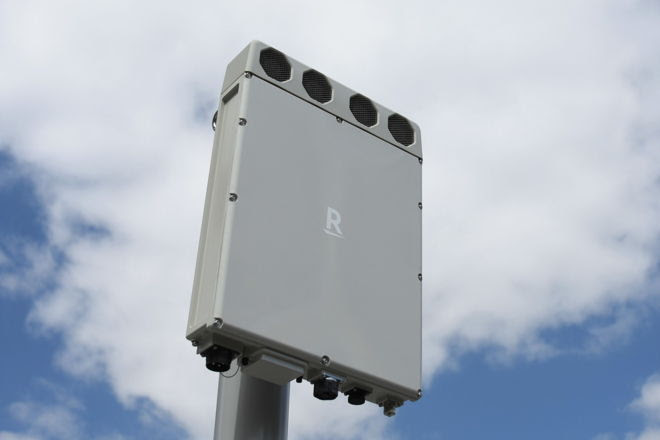Japanese carrier Rakuten Mobile said it has successfully verified data transfer on a 5G Standalone (SA) mobile network with the collaboration of Tokyo Institute of Technology (Tokyo Tech) at Tokyo Tech’s Ookayama Campus.
“In 5G SA networks, 5G technology is used throughout the network, from the Radio Access Network (RAN) to the core network. 5G SA is expected to enable operators to leverage the high capacity and high speed, low latency and massive multi-connectivity of 5G. In addition, advanced network control allows for end-to-end network slicing which will enable operators to provide services that are optimized for a wide variety of network uses,” the carrier said in a release.
Rakuten Mobile said that the data transmission was carried out using a 5G SA-compatible device on the 5G network at the campus, verifying the stable operation of 5G SA.
The Japanese telco began deploying 5G SA functions on part of its commercial 5G network last month. “Rakuten Mobile will leverage the results of the verification to improve the quality of its 5G SA network and in preparations for the full launch of commercial services,” the carrier said.
Rakuten Mobile plans to conduct further trials of other 5G SA functions, including network slicing and edge computing. Rakuten Mobile is also collaborating with Tokyo Tech on other trials utilizing 5G networks, and the two organizations are developing technologies for applications of 5G to benefit society.
Rakuten Mobile’s 5G SA network runs on the Rakuten Communications Platform (RCP). Using containers and microservices, all functions from the RAN to the core network run as cloud-native network functions (CNF), Rakuten Mobile explained.
“In the 5G RAN, the virtualized distributed unit (vDU) is connected to the virtualized centralized unit (vCU) via IP transport. These functions are already containerized in 5G NSA and are running as CNFs. The RAN is compliant with Open RAN standards, offering a high degree of security and transparency,” the telco said. “For the 5G core network, a newly containerized 5G core network (5GC) designed based on microservices architecture has been deployed. Running the 5GC as a CNF allows for faster and more cost-efficient improvement of network functions.”
Rakuten Mobile has deployed over 11,500 base stations for a population coverage of 73.5%. The Japanese operator aims to increase this coverage to 96% by the middle of the year.
Rakuten Mobile’s total obligation, agreed upon with the Japanese Ministry of Internal Affairs and Communications (MIC), is to deploy 15,787 sub-6 GHz base stations and 7,948 mmWave base stations. The carrier had agreed to deploy at least 667 sub-6 GHz and 441 mmWave base stations by the end of March 2021.
In September 2020, Rakuten Mobile launched 5G services in parts of Tokyo, Kanagawa, Saitama, Hokkaido, Osaka and Hyogo. The service is being initially offered via Non-Stand Alone (NSA) 5G architecture.
In June 2020, Rakuten Mobile and NEC Corporation announced that the two companies had reached an agreement to jointly develop the containerized standalone (SA) 5G core network (5GC) to be used in Rakuten Mobile’s fully virtualized cloud native 5G network.
Under the terms of the deal, Rakuten Mobile and NEC said they will develop the containerized SA 5G mobile core to be made available on the Rakuten Communications Platform (RCP).

